6.2 miles
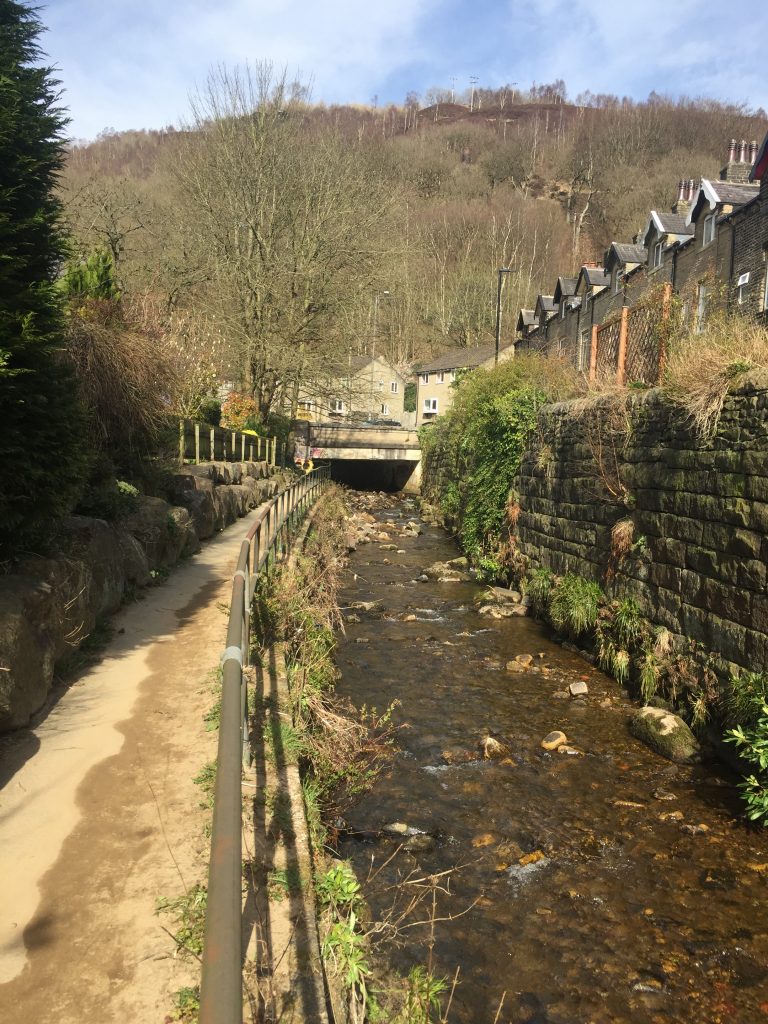
My usual modus operandi on my hikes from my front door is to catch a bus on t’ th’ tops and hike from there. But these are not normal times and so, after several days of 6-7 mile hikes I decided to go ‘up first.’ A couple of days ago I’d walked down from Jack bridge so today I started from my front door and walked up to Jack bridge. The only time I’d done the walk this way round was the first time I ever did it, in 2017, when I was in England for the summer, and I’d followed a footpath pamphlet which had little indication of the climb involved. And I have to say I was actually surprised that it took me about the same time to walk up as it does to walk down. You get a different view and I saw things that I’d not noticed before.

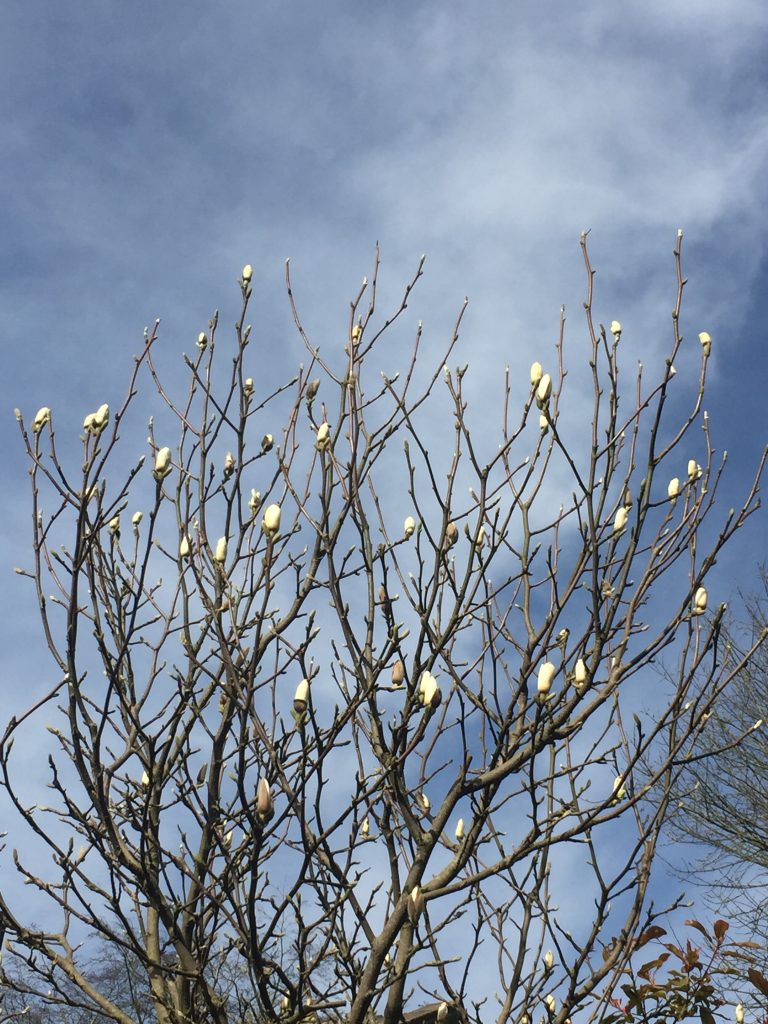
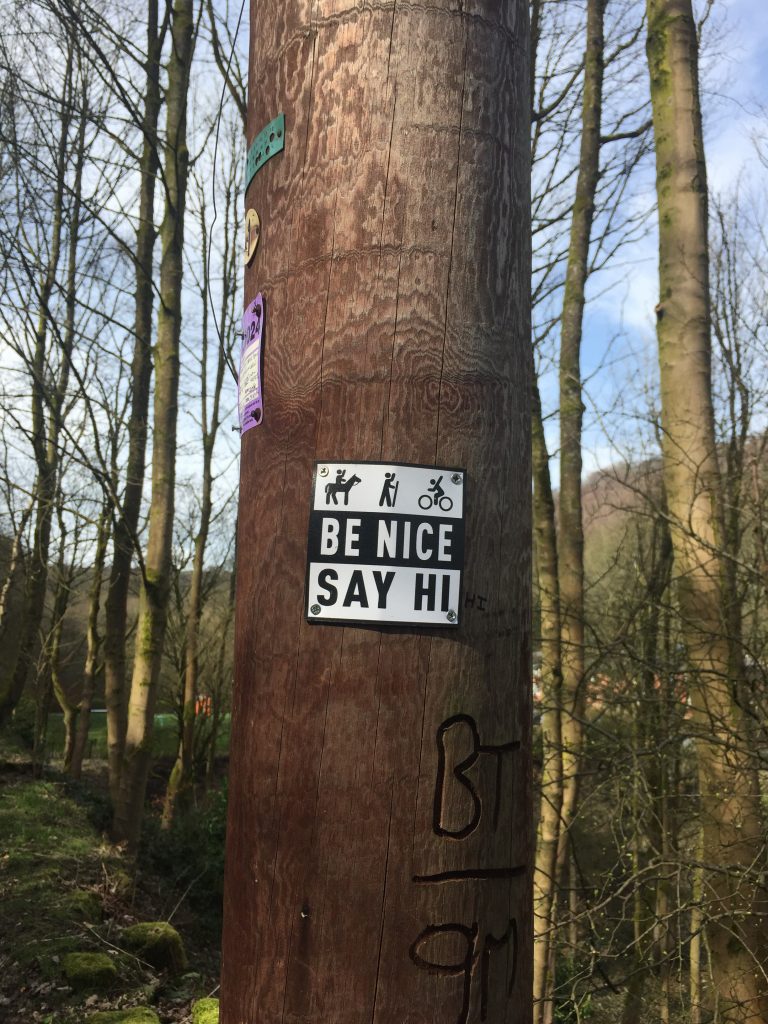

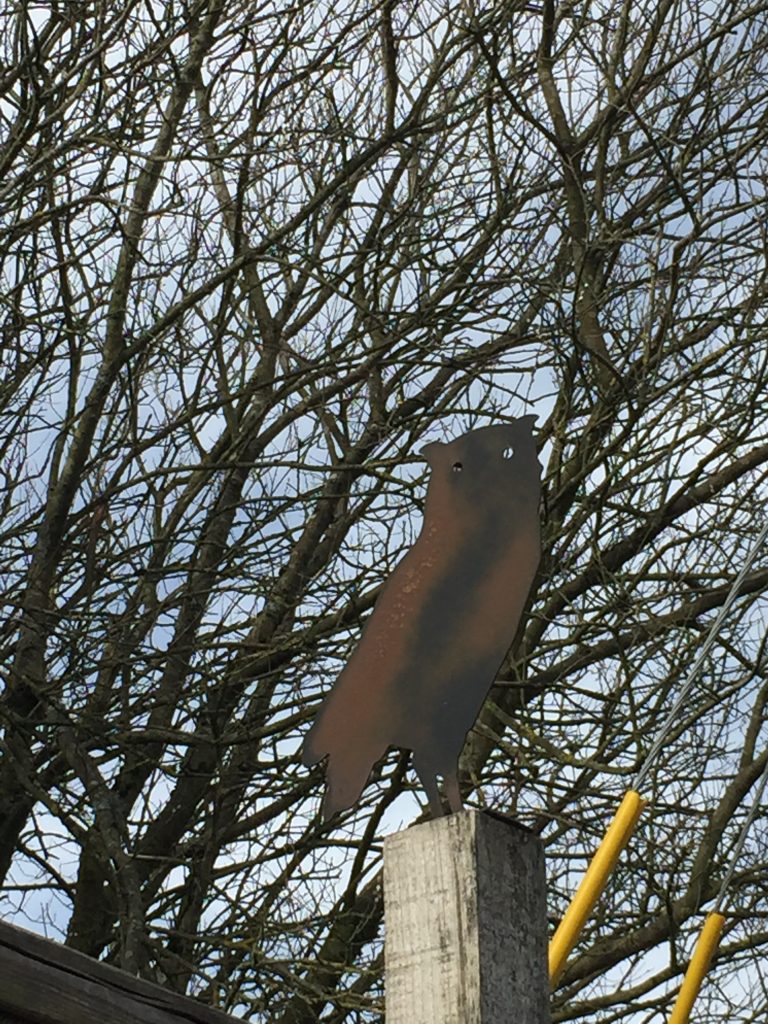

Eventually after about an hour I came out of the woods, passed Hudson Mill where my ancestor Sunderland had lived (see a former blog) and found myself opposite the New Delight pub, which, of course, is closed. A couple of weeks ago I used its name in a new song I wrote for the Hebden Bridge Little Theatre choir.

The rest of my hike would be along paved roads. The little zippy bus was parked on Smithy Lane at the turnaround and for a few moments I considered getting on it to go back down the hill but I was in no hurry to get home so I continued walking. In front of my was Edge Lane where I’d explored for the first time a couple of days ago. Now I could see exactly where my route had taken me, passed Spinks House. A little further along I passed an old building, The Smithy, now a private dwelling. i’d never thought of Smithy Lane as being where the blacksmith’s was once located. Up until now it had simply been a bus destination.
I passed Edge Hey Green where a row of cottage was once divided from the outdoor toilet by the road. Last year I’d made a textile panel of one of the toilet outbuildings for my ‘doors’ project.



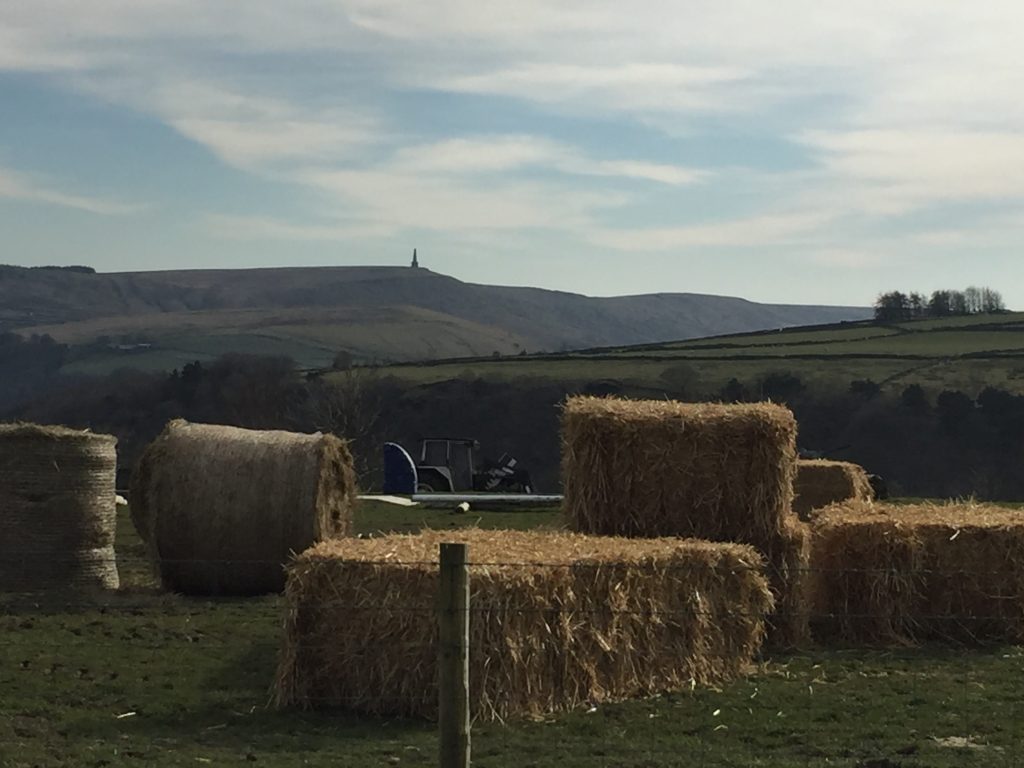



Wooden huts for the workers were built at Whitehill Nook, just below Draper Lane in Heptonstall/Slack and it became quickly known as Dawson City, after the Klondike city. I’ve been fascinated by this story since first seeing photos of the shanty town in the White Swan in Heptonstall on my summer visits to the area. By the time of the 1901 census, when Willie Wrigley was staying at the Pack Horse, Widdop, ten of the workers’ huts were occupied. Wives and children moved here with their husbands and soon the impact was felt in the local community. The Board School, built by my ancestors, of course, could not accommodate the extra children and so a spare room in the school master’s house was brought into service for the additional thirty children that came from Dawson City. Sanitation in the new city was obviously going to be a major problem and even as early as February 1901 two cases of typhoid had been removed from the shanty town to the Fielden hospital in Todmorden. In 1903 smallpox broke out. The navies were required to keep their children off school. Smallpox victims were taken to the isolation hospital at Sourhall close to Todmorden and vaccinations were given and a field hospital was built at Dawson city being constructed rom a tent and capable of caring for 14 patients. But in October 1903 it blew down in a gale. In all there were 60 cases of smallpox in the Hebden Bridge and Todmorden area, but only one patient died. In 1909 a woman, Mrs Edgar Harwood, fell from the bridge after going ‘for a stroll to admire the view.’ She was well known in Hebden Bridge and ran a dressmaking a millinery business under the name Townsend (her maiden name I think) and Milnes.





This area is set back from the main road and was one of the earliest major settlements in the town, dating back to the early 19th century. It was known as High street because of its elevation, not for its commercial prominence. Even on a totally dry day I find the steep cobbles between the steps very difficult to negotiate. The former mill itself is a three storey building on the main road, which I’d never noticed until today.
I posted the photo of Cuckoo Mill steps on the Hebden Bridge photo page and I was very surprised how many interesting comments it generated:
Ran up and down those steps many times as a child, remember when they filmed the movie 39 steps?
Hauled myself up those steps all through my pregnancy in 1980, kept me very fit
I had actually forgotten them til I saw this pic
I used to hate having to walk up them steps. 😂
I wish I had a pound for every time I have run up there!
Cuckoo Steps – Update, April17
A couple of weeks ago I took the short cut from Heptonstall road to Market Street. An old street. High Street runs parallel to Market Street and the area, known as Bridge Lanes, was a high density housing area, demolished in the 1960’s. I have many ancestors who lived in Bridge Lanes. The old High Street now terminates in some step stone steps, flanked on both sides by high walls. The sun never penetrates this place. It’s dank, dark, and for most of the year too slippery for me to tackle. To the right is the remains of a mill chimney, now only half its original height and covered in ivy. It’s quite picturesque and in the late afternoon sunshine it made a pretty photo. I posted it onto a Hebden Bridge photos Facebook page and I was very surprised by the number of comments it generated: people reminiscing about their use of the steps many years ago. It dawned on me later that if those were Cuckoo Mill steps and presumably its chimney where was Cuckoo Mill. I took on all the local history sites but could find no reference to Cuckoo Mill. So finally I emailed the Hebden Bridge Historical Society, of which I am a member, to see if I could find an answer to my questions. As always, the answer came back swiftly:
There is not a mill called Cuckoo Steps. The area was part of Breck Mill Estate and the chimney has a flue that goes under the road and the mill buildings were on what is now the Coop car park. Now I’d read about Breck Mill since one of my ancestor James Moss had started off his working life there first as a bookkeeper and later as a journeyman. His obituary shows that he became an important man in the town: Death and funeral of Mr James Moss
… head of the welll-known firm of Moss Brothers, fustian manufacturers, Hebden Bridge ….
pneumonia… Ewood Court … 55 … active members of Hebden Bridge Urban District Council … leaves widow and five daughters … chairman of the English Fustian Manufacturing Company … As a boy Mr Moss attended his relative’s seminary familiarily known as “Moss’s School” at Salem and Slater Bank. His first occupation on leaving school was that of a book-keeper at Breck Corn Mill, then in the ownership of Mr James Bairstow. There he remained for several years and became the rider-out or traveller, for the firm. The time came when through declining health Mr Bairstow wished to retire from the business. Mr James Moss had won the confidence of his employer, who entrusted him with responsible posts while still comparatively young; and he was still in the twenties when the Bairstow family made him an offer in conjunction with another employee to handover the business to them and find the necessary capital wherewith to work it. For some reason or other Mr Moss declined the offer, and decided to join his brothers who had commenced business as fustian cutters and manufacturers at Hebble-end.
The flood of 1891 caused the problems for the flour mill, but it looks as if it survived at least until 1902 but it was all over by 1 July 1916 and a search on the papers just after this date might provide an overview of its history.
HEBDEN BRIDGE PAROCHIAL MAGAZINE March. l892 THE FLOOD OF 1891 “But by far the greatest excitement was in Stubbing Holme, which since 1866 has been covered with long rows of houses and a large Co-operative Cotton Mill. The Calder, whose channel was wholly insufficient for the volume of water, bore so furiously on the part of the Breck Mill which is built over the stream, that it may be said to have demolished it. The debris so blocked the current that great part of the water had no escape, and, turned backward, converted the Holme into one turbulant lake. Strange were the stories told by the inhabitants of the houses, about the carrying off of large stores of provisions and the like. In two instances the floor of the cottages sank some inches, producing the sensations of an earthquake and turning one woman sick. Here, as elsewhere, horses up to the middle in water,were taken off with great difficulty to higher ground. Terrible havoc was made in the Cotton Mill, the looms on the ground floor being submerged. The goods were removed with all possible activity, damage was done to an extent which, at the lowest compution we have seen £1,000 will not cover. At the Breck Flour Mill the boilers had to be removed, and iron girders will be substituted for the broken arches, damage has been sustained to the amount of £2,000. The moon being nearly at full , the whole scene was plainly visible, and is described as solemnly grand.”
By 1919 it was a clothing mill owned by Fenton Greenwood.
Find: Hebden Bridge Times 22 April 1927 OLD HEBDEN BRIDGE BY D. EASTWOOD Cuckoo lane Bairstows mill. Bridge Lanes.
Somewhere, yesterday April 16, 2020, I read that they raised the walls at cuckoo steps to stop the boys peering over at the slaughter house. This must have been the slaughterhouse at the back of The Bull in where Joshua Gibson killed himself.
Cuckoo steps, Salem Sunday school demolished in 1962. Photo taken around 1960

I called in at the Coop on my way home 
And had my groceries delivered


Leave a Reply